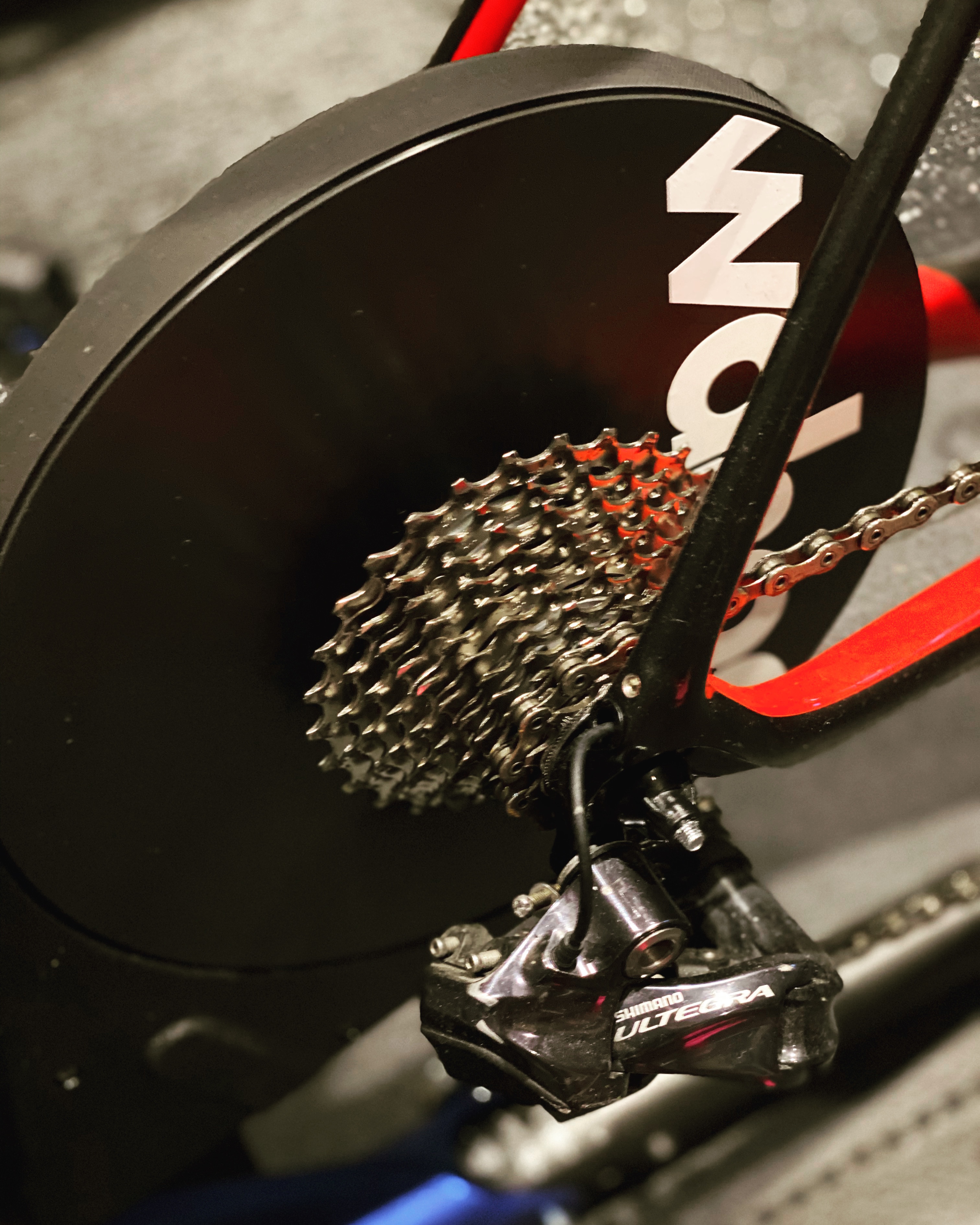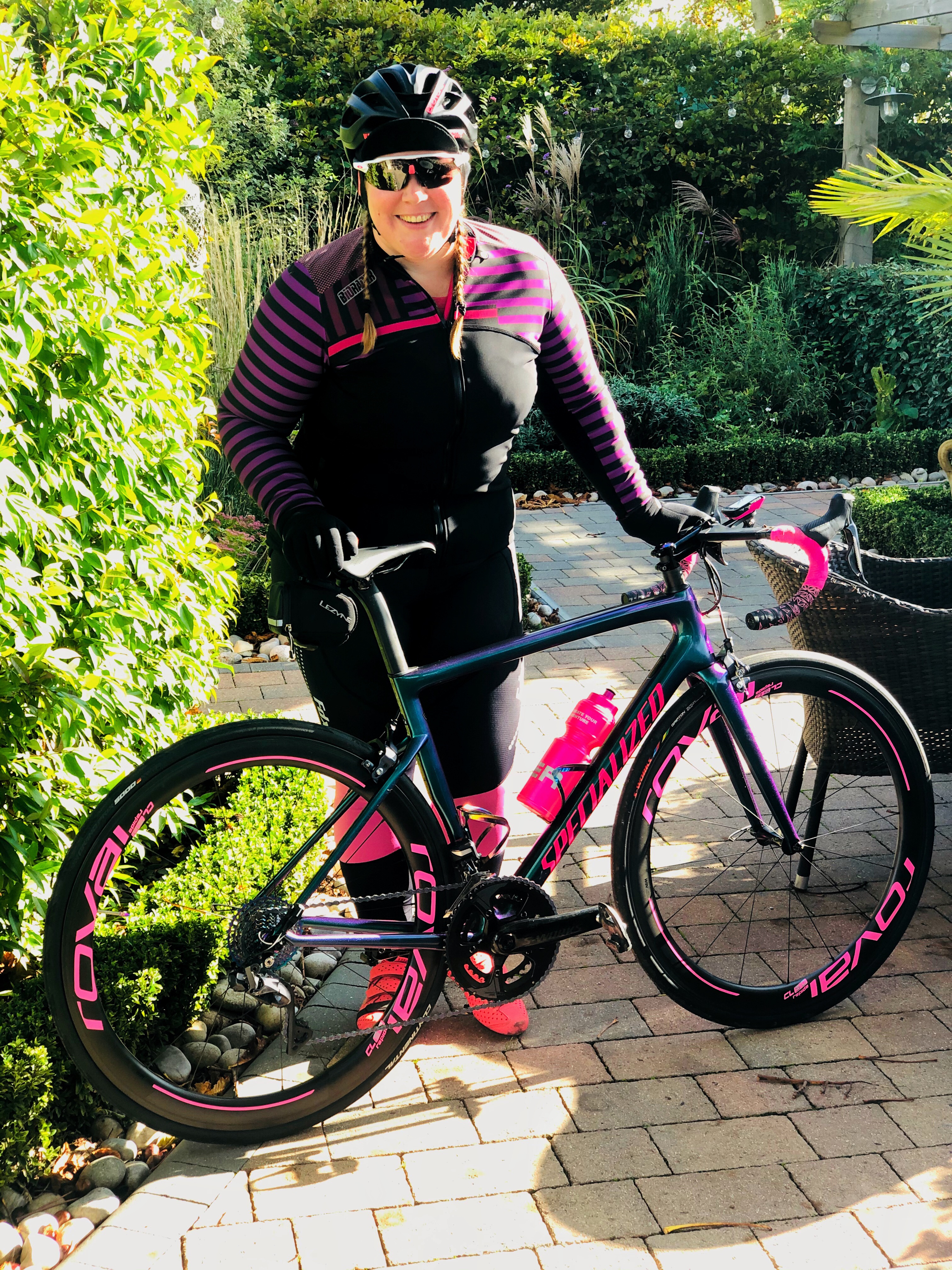CADENCE! It’s the favourite thing for my husband to say to me when on the bike, mainly because I train to cadence and my sweet spot, that I’m used to, is always a lower than it should be. He says it makes for more efficient riding and to help make me a more consistent cyclist. I know this and what he is saying, but as I said it is my sweet spot and where I feel most comfortable when riding but this doesn’t stop him shouting this at me with a smile on his face.
I push a big gear – always have and I know it’s not the most efficient but I find spinning leaves me with lower power and speed. But pushing a tough gear leaves me fatigued quicker. Think of it as a barbell on your shoulders and you have to hold this and do squats for 10 minutes straight, you wouldn’t go for your max weight, you’d choose a weight which is still a challenge but you can complete for the whole time. However, I also find on hills (which is the area I struggle most on the bike) that I get up them just slower than others, even on the recent Zwift race series I completed, I found I could hold my own until I hit a hill and at these points I would gradually see people pass me. I should probably concentrate on that cadence a little more and better gear selection as this will enable me to be more consistent on them hills, which I love so much.

So what is cadence? In the basic form cadence is the number of revolutions (complete turns) of the crank per minute and the rate which you are turning the pedals as you ride (revolutions per minute, RPM). The theory behind training using cadence is to improve efficiency when cycling. If you ride a bike you will have cadence and if you have a bike computer you will be able to see what your cadence is as you ride by using a cadence sensor.
Some people train off heart rate, some off power, some off cadence and some off feel. There are pros and cons to each and my advice would always be for people to do what works for them, but give them all a go and see what works for you and hopefully you’ll see an improvement We are all different and what works for one may not be right for someone else. I don’t have a power meter on my road bike though I do use power when using my indoor turbo trainer as it has the ability measure it.
If you find you are bouncing about on your saddle as you cycle then you are probably in a gear with very little resistance and this results in a very high cadence. If you are struggling turning the pedals then you are probably in a gear with a very high resistance resulting in a very low cadence. The idea of using cadence will see you cycling for optimum efficiency to your own ability. I choose to cycle off cadence as my main rides for this year, and recent years, are endurance events and I want to ensure that I will complete those in the most efficient way possible. No one wants to finish an event feeling absolutely ruined and for me I have found cadence really helps me.
When cycling to a higher cadence of between 80-90 its very important to find the gear that you can just keep spinning in. This gear will be one that you can still feel a resistance in but isn’t high enough that you cant manage for most of your ride and you tire very quickly in. The theory behind this is that if you can spin at 85 RPM you should be able to do this on any gradient as long as you choose the correct gear selection. Obviously if you are going up a hill and in your easiest gear, small ring at the front and big at the back, and can’t hit your rate (this is the area I need work in) there’s nothing you can do other than your best. The only time you can afford to push a big gear and low cadence is going downhill, as you have gravity working for you. If you are exhausted at the top of the hill its very important to pedal on the way down to aid recovery as well.
That is not to say sessions with low cadence and high cadence do not have their place in a training schedule either as they certainly do. Some sessions, often referred to as high gear, will see low cadence and high resistance, and this can help develop both core and leg strength. Equally a session using lower gears will see high cadence and can help with cardiovascular fitness and smooth pedal stroke.

You may have heard of the saying ‘spin to win’ and this is something I say going up hills! But this is said with cadence in mind – spin up in a gear that is manageable in order to preserve energy.
Although research into this area will largely see numerous stats that focus on optimal cadence being between 80 to 90 RPM, I have not included a breakdown of figures because this will differ for various reasons but some of which are:
- type of riding
- level of ability
- training or event
- performance
- fatigue
And, of course, as always when riding outside the conditions you ride in dictate performance – there are so many variable factors with weather and traffic to name a couple that will always affect performance results but above all enjoy riding.
Happy spinning!

Sounds like me . I just can’t get up hills without going down to my ‘easiest’ gear ( small front , big back ) and it’s still a struggle and everyone overtakes me . 😀. Really useful thanks . Not loving the zwift so doing my own thing on the turbo but obvs can’t see my cadence if I’m not on zwift . I know fir my Tri that bike has to be the best it can be as it’s always the biggest part . Onwards I go but all your advice is really helping !! Xx
Very welcome lovely. I’m not the best on hills but learn to spin I will get up after others but will get up. I tried Trainer Road on the trainer but much preferred Zwift. I know others who prefer Sufferfest. X